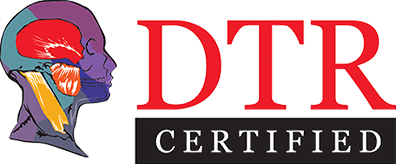A Complete Digital Workflow
Digital occlusal analysis utilizes computer-guided treatment for TMD/TMJ disorders, providing patients better quality care in less time.
Approximately 15 million Americans suffer from some sort of bite disorder. These conditions can range from minor, infrequent pain and clicking to debilitating migraines and an inability for the jaw to function. 90% of these cases are caused by the muscles in the jaw with the other 10% a result of dislocation or a degenerative joint. Regardless of the cause, it is possible to treat these disorders with TMD/TMJ Therapy. 27 years of published research definitively show that DTR is the most effective treatment option available to today’s TMJ/TMD patient. Digital Occlusion Seminars will give you the knowledge and skills to incorporate DTR into your dental practice.
The primary goal of TMD/TMJ Therapy is to return the jaw to its proper function thereby eliminating the related symptoms. In many cases, a combination of treatments may be utilized with some improving the function of the muscles and others addressing the relationship between the teeth and bones.

“Drs. Kerstein and Sutter have dedicated their lives to helping the dentists and future dentists of the world learn Disclusion Timing Reduction, which can dramatically change the lives of patients. I am grateful to these two for helping me accomplish my heart’s desire of helping my patients live a life without pain. Learning DTR has aided in nearly every aspect of my dental practice and I cannot recommend these doctors or this technique more highly.”
For more than 30 years, computerized occlusal analysis has been used to better understand how to treat TMD/TMJ disorders. Until these systems developed, a nightguard (plastic splint) was often the preferred treatment option. Disclusion Time Reduction Therapy is a computer-guided form of treatment that makes minor adjustments to the teeth. These adjustments improve occlusion (the relationship between teeth) and allow the muscles to relax. By improving occlusion and relaxing muscles, pain and the need for either surgery or a nightguard are often eliminated. And, treatment can be completed in as few as 1 to 3 appointments with the benefits lasting for years.

“It was amazing to have the tension in my jaw just literally disappear during my appointment with Dr. Sutter. I researched DTR across the country. It is a procedure that makes sense. And, Dr. Sutter is one of the leading dentists doing it. I traveled halfway across the country for this procedure. And, it has literally changed my life.”
While many dentists offer TMD/TMJ therapy, few are properly trained or have enough practical experience handling these complex cases. DTR Certification is an extensive process that allows patients to connect directly with dentists who have met or exceeded a stringent set of requirements. These include use of certain pieces of equipment; completion of a 2-day didactic course; clinical course work treating real patients; and a mastery of TMJ physiology, bio-mechanics and anatomy. A database of DTR Certified practitioners is coming soon.
Credentialed DTR Providers

Robert Kerstein, DMD is recognized as a leading author and researcher in the field of Computerized Occlusal Analysis. He has published several reviewed publications, authored textbook chapters, and most recently, has collaborated as Head Editor with 16 international authors to create the Handbook of Research on Computerized Occlusal Analysis Applications in Dental Medicine.

Ben Sutter, DMD has been studying and treating TMJ dysfunction since going into private practice in 2008. In that time, he has sought advanced education and training in treating neuromuscular issues. His studies have taken him to the Las Vegas Institute, and the Piper Education and Research Center, as well as becoming Perfect Bite Doctor certified.
It is important to understand every clinician will interpret data and develop treatment plans differently. It is important to understand there is no guarantee of success regardless of chosen therapy. Every situation is unique, and every patient responds differently to treatment due to preexisting conditions and other factors.
This said, it is equally important for any dentist you seek to handle TMD/TMJ issues to have completed advanced training. The ADA does not recognize TMD as a specialty but in general, the more objective measurement incorporated in therapy, the more successful it can be. DTR Certification is one of these training programs and is the entry level into a larger curriculum. The dentists who have been definitively trained in DTR have helped thousands of patients live an improved quality of life.
If your dentist has a T-scan or a BioEMG III but is not on this list, he/she has not been trained in DTR therapy, nor have they been certified to perform DTR on patients.
